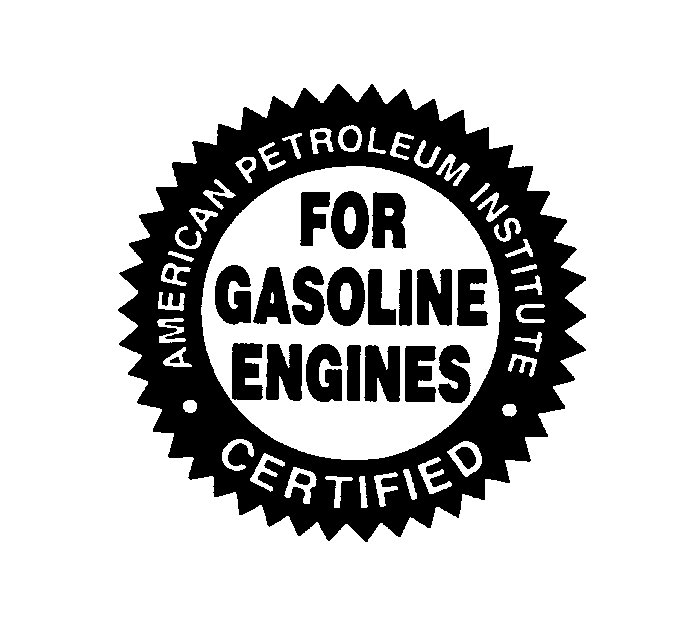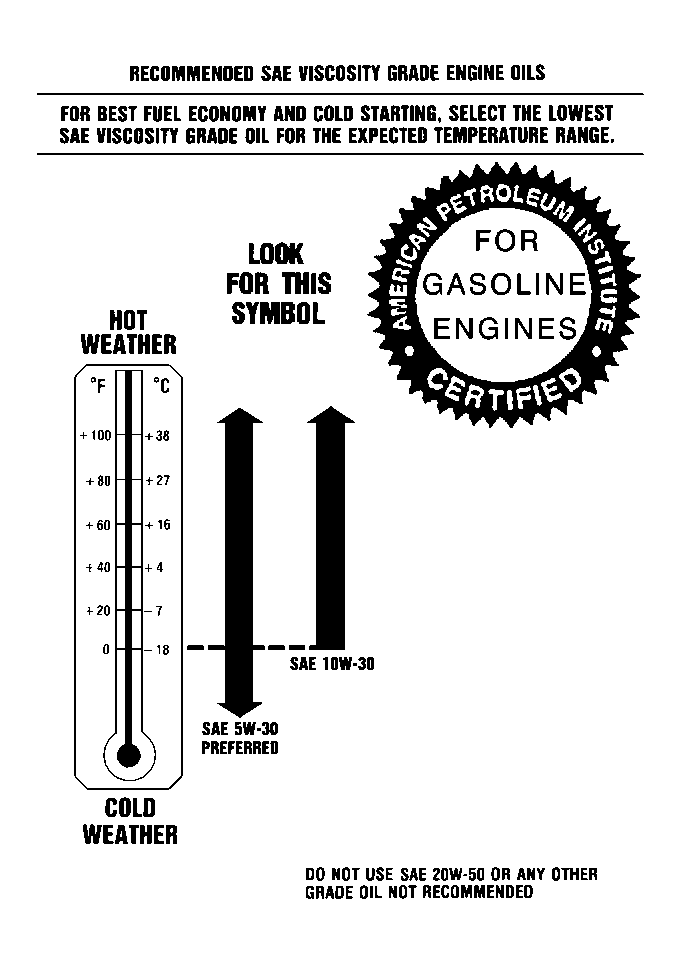For time and/or mileage intervals of scheduled maintenance items, refer to Maintenance Schedule .
The following text and illustrations describe the details of the required scheduled maintenance services.
For information on the proper fluids and lubricants to use, refer to Fluid and Lubricant Recommendations .
Engine Oil and Oil Filter Change
For the engine oil and oil filter changing procedure, refer to Engine Oil and Oil Filter Replacement in Engine Mechanical.
Engine Oil Quality

Notice: Oil that does not have the GM4718M specification designation can cause engine damage not covered by the warranty.
Important: DO NOT use engine oil additives in Corvette engines.
When adding to, or changing to the engine oil, use ONLY oils of the proper quality. The Corvette engine requires a special oil meeting the GM Specification 4718M. The oils meeting this GM Specification may be identified as synthetic, and should also be identified with the American Petroleum Institute (API) Certified For Gasoline Engines STARBURST symbol. However, NOT ALL Synthetic oils with the STARBURST symbol will meet this GM Specification. Look for and use ONLY the oils that meet GM Specification 4718M.
All Corvette engines are filled at the factory with Mobile 1® synthetic oil, which meets all requirements of GM Specification 4718M.
Engine Oil Viscosity

Notice: Using oils of any viscosity other than those recommended could result in engine damage. When choosing an oil, consider the range of temperatures the vehicle will be operated in before the next oil change. Then, select the recommended oil viscosity.
SAE 5W-30 is the only viscosity grade recommended for your vehicle.
Use only oils which have the API Starburst symbol and which are also identified as SAE 5W-30.
If the temperature range is 0°F (-18°C) or above SAE 10W-30 oil which has the API Starbust symbol is acceptable if SAE 5W 30 oils is not available. Areas where the temperature falls below -20°F (-29°C), it is recommended either an SAE 5W-30 synthetic oil or and SAE 0W-30 oil. Both will provide easier cold starting and better protection for the engine at extremely low temperatures. Do not use other viscosity grade oils, such as SAE 10W-40 or SAE 20W-50 under any conditions.
Tire Rotation
The tires on your vehicle are different sizes front and rear. Due to this, your tires should not be rotated. Each tire and wheel should be used only in the position it is in.
Accessory Drive Belt Inspection
Inspect the accessory drive belts for the following:
| • | Cracks |
| • | Fraying |
| • | Wear |
| • | Proper tension |
Replace as needed. Belts can have many small cracks in individual ribs without affecting the performance. Refer to Drive Belt Replacement - Accessory and Air Conditioning Compressor Belt Replacement in Engine Mechanical.
Cooling System Service
Notice: DO NOT use cooling system seal tabs, or similar compounds, unless otherwise instructed. The use of cooling system seal tabs, or similar compounds, may restrict coolant flow through the passages of the cooling system or the engine components. Restricted coolant flow may cause engine overheating and/or damage to the cooling system or the engine components/assembly.
Notice: When adding coolant, use DEX-COOL® coolant. If silicated coolant is added to the system, premature engine, heater core or radiator corrosion may result. In addition, the engine coolant will require change sooner-at 50 000 km (30,000 mi) or 24 months.
Drain, flush and refill the system with a 50/50 mixture of clean, drinkable water and ONLY GM Goodwrench® DEX-COOL® or Havoline® DEX-COOL® silicate-free coolant. Refer to Cooling System Draining and Filling in Engine Cooling.
Transmission Service
Manual Transmission
No fluid changing service required. For fluid level checking maintenance intervals, refer to Periodic Maintenance Inspection .
Automatic Transmission
Change both the fluid and the filter according to the maintenance schedule intervals. For maintenance schedule information, refer to Maintenance Schedule .
For the fluid and filter changing procedure, refer to Automatic Transmission Fluid and Filter Replacement in Automatic Transmission.
Spark Plug Replacement
Replace the spark plugs according to the maintenance schedule intervals with the correct type. For maintenance schedule information, refer to Maintenance Schedule .
For information on the correct type of spark plug, refer to Maintenance Items .
For the spark plug replacement procedure, Refer to Spark Plug Replacement in Engine Controls.
Spark Plug Wire Inspection
Clean the spark plug wires and inspect for burns, cracks or other damage. Check the wire boot fit at the coils and at the spark plugs. Replace wires as needed. Refer to Spark Plug Wire Replacement in Engine Electrical.
Air Cleaner Filter Replacement
Replace the air cleaner filter according to the maintenance schedule intervals with the correct type. For maintenance schedule information, refer to Maintenance Schedule .
For information on the correct type of air cleaner filter, refer to Maintenance Items .
For the air cleaner filter replacement procedure, refer to Air Cleaner Element Replacement in Engine Controls.
